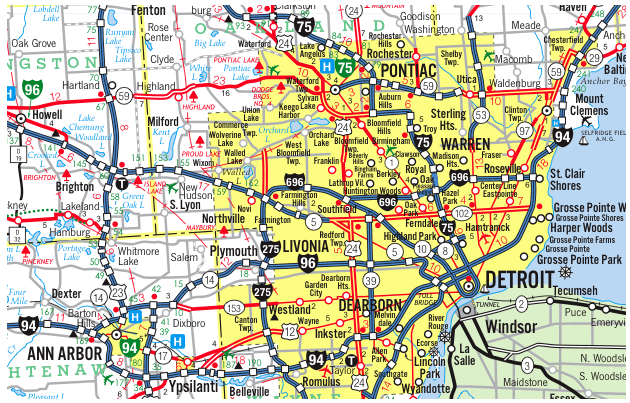Where Does the Most Air Leakage and Energy Loss Occur in a Residential House?
Energy efficiency is a growing concern among homeowners, especially as energy costs rise and environmental awareness increases. A significant factor that impacts a home’s energy efficiency is air leakage, which contributes to unwanted heat loss in winter and heat gain in summer. Understanding where the most air leakage and energy loss occur in a typical residential house is the first step toward improving comfort, reducing utility bills, and enhancing overall energy performance.
What Is Air Leakage?
Air leakage refers to the unintentional flow of outside air into a building and the escape of conditioned air from the interior, through gaps, cracks, and holes in the building envelope. These leaks often go unnoticed but can significantly affect heating, ventilation, and air conditioning (HVAC) system loads.
Top Areas of Air Leakage and Energy Loss in a House
1. Attic and Roof Penetrations
The attic is one of the most overlooked yet significant sources of air leakage. Warm air rises (stack effect), and any unsealed openings in the attic floor allow heated indoor air to escape. Key problem areas include:
-
Gaps around recessed lighting (can lights)
-
Openings for plumbing stacks, vent pipes, and electrical wiring
-
Attic access hatches or pull-down stairs
-
Poorly sealed soffits or dropped ceilings
2. Windows and Doors
Old or poorly installed windows and exterior doors are classic culprits of energy loss. Air leaks can occur:
-
Around the frames, especially if not properly sealed with caulk or foam
-
Through worn weather stripping
-
At the bottom of doors where thresholds or door sweeps are missing or degraded
-
In single-pane windows or poorly insulated glazing systems
3. Wall Penetrations and Electrical Outlets
Small openings in walls can add up to substantial leakage:
-
Electrical outlets and switches, particularly on exterior walls
-
Cable, telephone, or plumbing penetrations
-
Gaps behind baseboards and crown molding
-
Unsealed drywall-to-floor and drywall-to-ceiling joints
4. Basements and Crawl Spaces
The foundation area is another major source of uncontrolled airflow, especially in older homes:
-
Gaps along the rim joist and sill plate
-
Unsealed ductwork or plumbing penetrations through the basement ceiling
-
Cracks in concrete walls or floors
-
Air leakage through crawl space vents or unsealed access doors
5. HVAC System and Ductwork
The duct system, if located in unconditioned spaces like attics, garages, or crawl spaces, can be a major source of energy loss:
-
Disconnected or leaking duct joints
-
Uninsulated ducts that lose heat or gain it from surrounding air
-
Poorly designed or balanced systems that create pressure differentials, exacerbating leakage through the building envelope
6. Fireplaces and Chimneys
A fireplace can be a large hole in your home’s envelope if not properly sealed:
-
Open or poorly sealed damper doors
-
Gaps around fireplace surrounds
-
Chimneys that are not air-sealed where they penetrate the building envelope
7. Garage-to-House Connections
Attached garages often have air leaks that can carry unconditioned air — or even carbon monoxide — into the home:
-
Doors between the garage and house with poor seals
-
Gaps in shared walls or ceilings
-
Unsealed HVAC ducts that run through garage spaces
The Stack Effect and Pressure Dynamics
Understanding how air moves in a home is crucial. The stack effect causes warm air to rise and escape through the top of the house, drawing cold air in through lower-level leaks. This vertical air movement is most pronounced in colder climates. Similarly, wind pressure on the windward side of the home can push air in, while it sucks it out from the leeward side, amplifying leaks.
How to Identify Air Leakage
Several tools and techniques can help detect air leakage areas:
-
Blower door tests measure a home’s air tightness by depressurizing it and identifying leaks.
-
Infrared thermography reveals temperature differences, highlighting gaps in insulation and leakage paths.
-
Smoke pencils or incense sticks can detect small drafts near suspected leak points.
Mitigation Strategies
Addressing air leakage and energy loss can lead to significant energy savings:
-
Seal attic penetrations with caulk or foam.
-
Install insulated attic hatches and weather-strip them.
-
Replace or repair weather stripping and thresholds on doors and windows.
-
Use foam gaskets behind outlet and switch plates.
-
Air-seal and insulate rim joists in basements.
-
Ensure ductwork is sealed and insulated, especially in unconditioned spaces.
-
Upgrade to energy-efficient windows or use interior storm panels.
-
Add mechanical ventilation to ensure healthy indoor air after tightening the envelope.
Conclusion
The most common areas of air leakage and energy loss in a home include the attic, windows and doors, ductwork, walls, and the basement or crawl space. A comprehensive approach to sealing and insulating these areas not only improves energy efficiency but also increases occupant comfort, improves indoor air quality, and reduces HVAC wear and tear.
By identifying and addressing these problem areas, homeowners can make informed decisions that contribute to long-term energy savings and a more sustainable living environment.




 Our Construction company is Servicing Southeast Michigan, Detroit and the Tri-County area Wyane, Oakland and Macomb;
Our Construction company is Servicing Southeast Michigan, Detroit and the Tri-County area Wyane, Oakland and Macomb;

